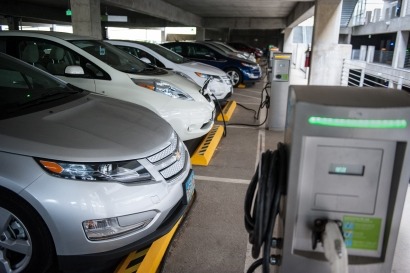
The company’s Electric Vehicle Supply Equipment Tracker 3Q13 report says that growing sales of plug-in electric vehicles (PEVs) have driven the market for charging points meaning that investment in this area is beginning to shift from government to private business. This will in turn will lead to more streamlined business models.
Most of the demand for chargers is from home (residential) consumers, yet the numbers of commercial chargers such as the electric vehicle supply equipment (EVSE) installed at workplaces, in public locations or near apartments or fleet depots, are also growing.
Recently released statistics from the Ford motor company’s MyFord mobile app suggests that the number of all-electric trips for plug-in hybrids increases by about 50 percent after six months of ownership, something that the company attributes to improved driving habits and the growth in charging infrastructure.
World sales of EV chargers are expected to grow from 442,000 units in 2013 to 4.3 million in 2022, including private, consumer-focused charging points alongside publicly installed equipment. However the report also says that the sector still faces challenges, such as the large number of players in a small market heavily reliant on government subsidies. This has meant some EVSE players going out of business, exiting the market or partnering with competitors. Furthermore, the different charging networks remain a source of confusion and inconvenience for consumers.
Further information:

